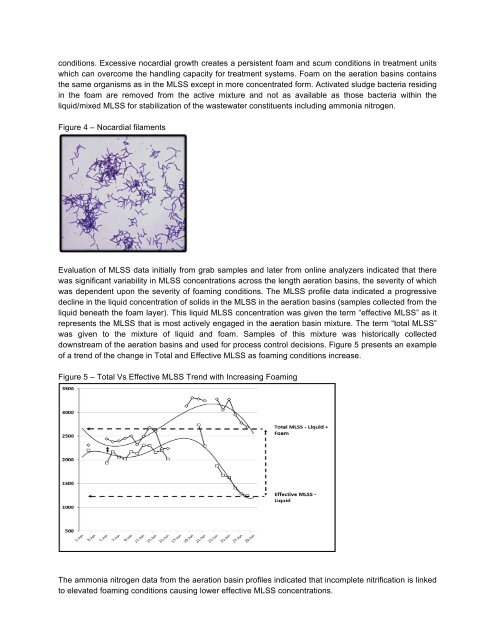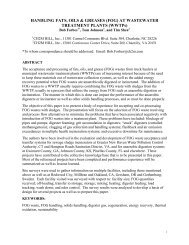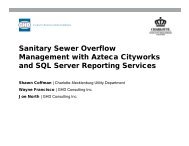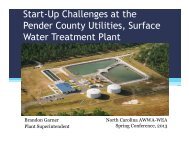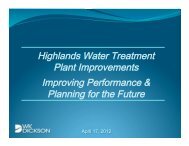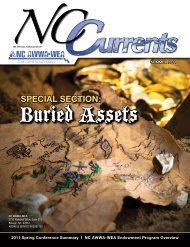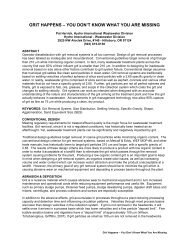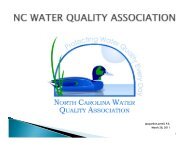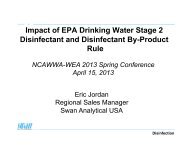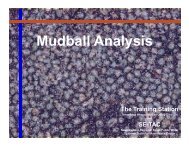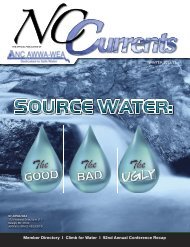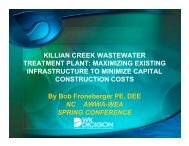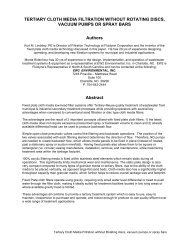NITRIFICATION AND ACTIVATED SLUDGE FOAMING ...
NITRIFICATION AND ACTIVATED SLUDGE FOAMING ...
NITRIFICATION AND ACTIVATED SLUDGE FOAMING ...
You also want an ePaper? Increase the reach of your titles
YUMPU automatically turns print PDFs into web optimized ePapers that Google loves.
conditions. Excessive nocardial growth creates a persistent foam and scum conditions in treatment units<br />
which can overcome the handling capacity for treatment systems. Foam on the aeration basins contains<br />
the same organisms as in the MLSS except in more concentrated form. Activated sludge bacteria residing<br />
in the foam are removed from the active mixture and not as available as those bacteria within the<br />
liquid/mixed MLSS for stabilization of the wastewater constituents including ammonia nitrogen.<br />
Figure 4 – Nocardial filaments<br />
Evaluation of MLSS data initially from grab samples and later from online analyzers indicated that there<br />
was significant variability in MLSS concentrations across the length aeration basins, the severity of which<br />
was dependent upon the severity of foaming conditions. The MLSS profile data indicated a progressive<br />
decline in the liquid concentration of solids in the MLSS in the aeration basins (samples collected from the<br />
liquid beneath the foam layer). This liquid MLSS concentration was given the term “effective MLSS” as it<br />
represents the MLSS that is most actively engaged in the aeration basin mixture. The term “total MLSS”<br />
was given to the mixture of liquid and foam. Samples of this mixture was historically collected<br />
downstream of the aeration basins and used for process control decisions. Figure 5 presents an example<br />
of a trend of the change in Total and Effective MLSS as foaming conditions increase.<br />
Figure 5 – Total Vs Effective MLSS Trend with Increasing Foaming<br />
The ammonia nitrogen data from the aeration basin profiles indicated that incomplete nitrification is linked<br />
to elevated foaming conditions causing lower effective MLSS concentrations.


